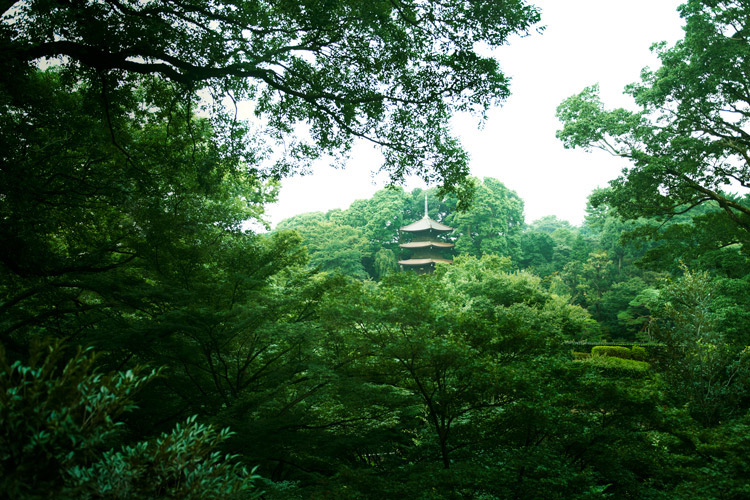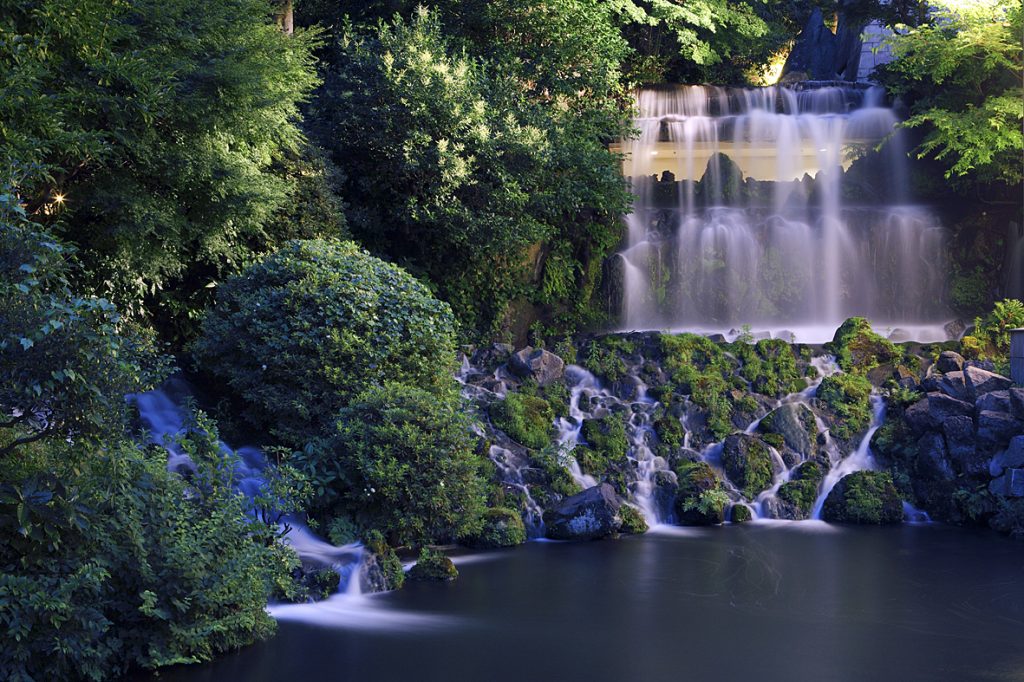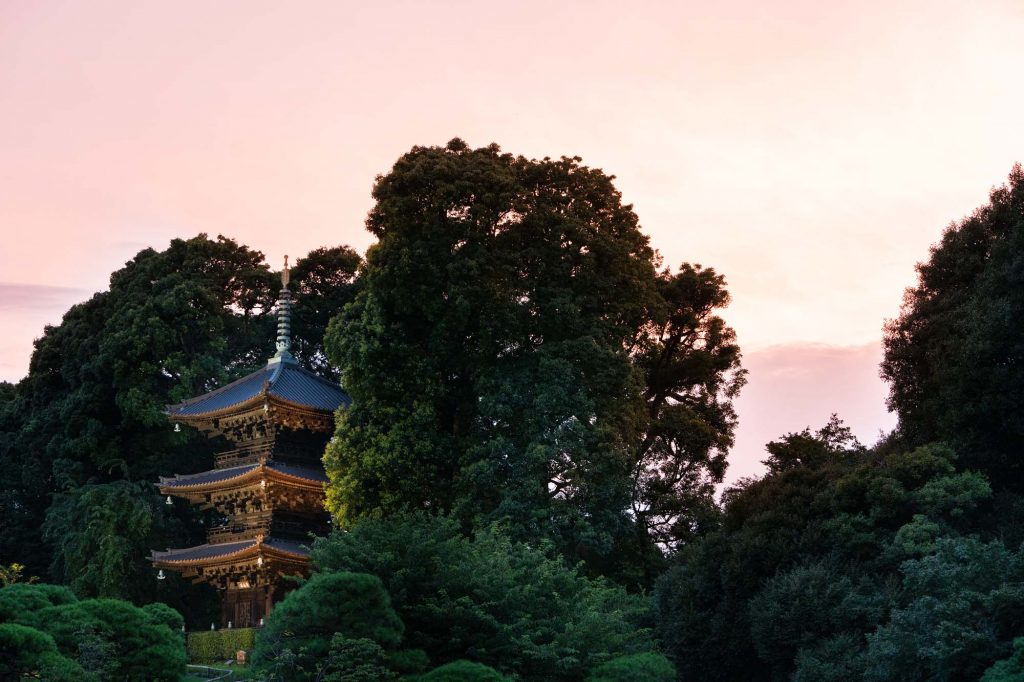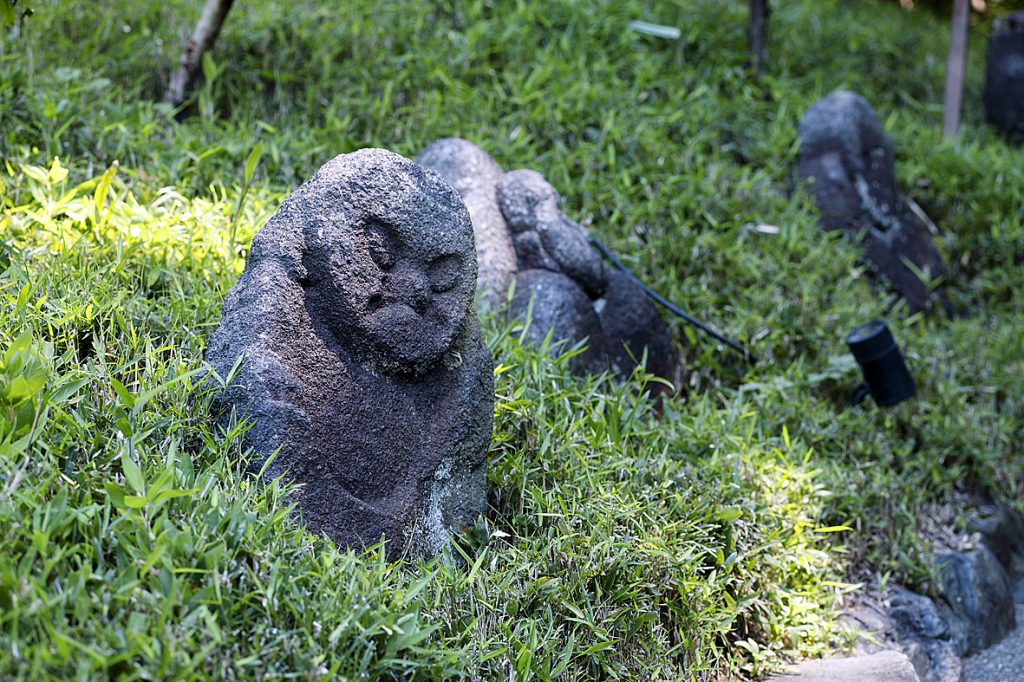

Gardens
What's new
Guide to Chinzanso Garden: The Twelve Scenic Views

The opportunity to appreciate the beauty of Chinzanso Garden is what makes staying at Hotel Chinzanso Tokyo a truly special experience. Built by Prince Yamagata Aritomo (1838-1922) in 1878 on Camellia Hill, a historical scenic location, Chinzanso Garden stands out as one of the most beautiful Japanese gardens in Tokyo. It enables guests to savor the beauty of the seasons in the heart of the city and at the same time provides a glimpse into Japan’s rich history and culture.

Japanese gardens typically emulate larger landscapes in miniature form. Ponds represent the sea, streams replicate rivers, and rocks and small hills stand in for mountains. Chinzanso Garden features numerous scenes and structures associated with Japan’s nature and history, providing visitors with a comprehensive experience.
Even during a brief stay in Tokyo for travel or business, at Chinzanso Garden you can sense that you’ve experienced Japan as a whole due to the varied landscapes and structures symbolizing the natural and historical facets of the country.
In this article, we present the Twelve Scenic Views of Chinzanso Garden, showcasing sights that encapsulate the essence of our garden.
The Twelve Scenic Views of Chinzanso Garden

When it comes to landscapes, Japan employs terms such as “hakkei” (eight scenic views) or “junikei” (twelve scenic views) to denote a selection of specific locations that embody the beauty and allure of a particular region.
This terminology is believed to have originated from the 10th-century Chinese art series “Eight Views of Xiaoxiang,” which depicted scenes from the Xiaoxiang region in what is now the Hunan Province. Serving as a muse for artistic creations throughout East Asia, this series inspired the concept of compiling collections of scenic views from specific regions, particularly landscapes around lakes and seas, considered most picturesque. Terms like the Eight Scenic Views of Japan emerged from this tradition.
Japanese gardens, being miniature representations of expansive landscapes, have a tradition of designating the eight or twelve scenic views within a garden—key locations embodying the garden’s essence. Prince Yamagata Aritomo initially chose the Ten Scenic Views of Chinzanso Garden. Over time, with changes to the garden, notably the addition of monuments like the Three-Story Pagoda, the compilation of scenic views underwent revision.
While some of the original views were retained, new ones were introduced, resulting in the Twelve Scenic Views of Chinzanso Garden. In 2023, commemorating 140 years since the garden’s inception, Hotel Chinzanso Tokyo revisited and updated the collection of scenic views, introducing the Twelve Scenic Views of Chinzanso Garden in the Reiwa era (*).
*The Reiwa Era began on May 1, 2019.
Here, we present each of the new scenic views in Chinzanso Garden. We hope this article acts as a guide while you explore the garden and capture its beauty through photography.
1. Entsukaku Three-Story Pagoda – A Registered Tangible Cultural Property

The three-story pagoda in Chinzanso Garden, named Entsukaku, was originally part of a temple in Hiroshima Prefecture and was relocated to Chinzanso Garden in 1925.
The pagoda was built in a style indicative of the early Muromachi period (1336–1392). However, a legend associated with the pagoda suggests that it underwent its first restoration by the distinguished general Taira no Kiyomori (1118 – 1181), who is renowned for rebuilding the iconic Itsukushima Shrine on Miyajima Island, one of Japan’s Three Most Scenic Places.
Inside the pagoda, there is an enshrined statue of the Kannon Bodhisattva, the Buddhist deity of mercy. The structure, consecrated in 2010 upon the completion of its restoration, has been officially recognized as a tangible cultural property.
2. Yusuichi Pond

Yusuichi Pond has existed since Prince Yamagata initially designed the garden, playing a central role in the waterscape he had envisioned. Its beauty evokes the imagery of a mountain lake or a sea embraced by mountains.
The pond stands out as one of the prime locations for capturing the beauty of the Tokyo Sea of Clouds, as the mist predominantly gathers around this central water feature.
3. Choshubaku Waterfall
The small waterfall known as Choshubaku descends gracefully from Yusuichi Pond, its name signifying a waterfall designed for enjoying the autumn leaves. This feature provides a glimpse of Prince Yamagata’s meticulous consideration for creating picturesque waterscapes.
4. Kokosei Well
Kokosei Well was constructed above a spring that releases groundwater from the Chichibu Mountains, a range of scenic peaks situated west of Tokyo and now encompassed within the Chichibu-Tama-Kai National Park.
It is said that the well was made accessible to the public to provide relief for those impacted by the Great Kanto Earthquake of 1923.
5. Kanga Garden

Ryotei Kinsui, established in 1987, is a kaiseki cuisine restaurant housed in a traditional sukiya-style building. In 2023, to commemorate Hotel Chinzanso Tokyo’s 70th anniversary, the courtyard at the heart of the restaurant was named Kanga Garden, a nomenclature that signifies refinement and elegance.
Kanga Garden offers a diverse waterscape, featuring views of gracefully flowing crystal-clear streams, a majestic waterfall, and Unkinchi Pond facing the building—providing a serene and picturesque backdrop.
6. Unkinchi Pond

Unkinchi Pond is within view from Ryotei Kinsui, offering enchanting seasonal views of the garden to guests savoring lunch or dinner in our timeless Japanese restaurant.
“Unkin” translates to “cloud brocade” (a silk textile) and alludes to the vibrant pattern created by cherry blossoms and autumn leaves that are reflected on the pond’s surface during spring and autumn. This picturesque waterscape has graced the garden since its initial creation.
7. Hotaru-sawa (Firefly Stream)

Originally known as Chikurikei, Hotaru-sawa was chosen as one of Prince Yamagata’s ten scenic spots in the garden.
From around mid-May to June, during the early days of summer, fireflies can be observed fluttering around this stream. Benkei Bridge stands out as one of the prime locations to appreciate this enchanting spectacle.
8. Goshinboku (Sacred Tree)

The Sacred Tree, known as Goshinboku, is estimated to be approximately 500 years old. A beech variety, it is the oldest tree in Chinzanso Garden, distinguished by its dignified presence. Its identification is made easy by the shimenawa encircling its trunk—a sacred rope crafted from rice straw, traditionally employed at Shinto shrines to mark sacred areas.
9. Hannyaji Temple Stone Lantern

Constructed in the later Kamakura period (1192–1333), this stone lantern exhibits a style distinctive to Nara’s Hannyaji Temple. This genre of garden lanterns found favor among tea ceremony enthusiasts and landscapers during the Edo period (1603–1867).
Given its widespread popularity, numerous replicas emerged. However, according to research conducted by stone art expert Dr. Masataro Kawakatsu, the lantern in Chinzanso Garden stands as the authentic Kamakura period original while the counterpart at Hannyaji Temple in Nara is likely a reproduction.
10. Camellia Hill and Camellia Path

The hill situated in front of Hotel Chinzanso Tokyo’s main building is named Tsubaki-yama (Camellia Hill), the original designation for this area. It also stands at the origin of the name Chinzanso, which literally translates to “manor on Camellia Hill.”
A prominent spot for viewing camellia blossoms since time immemorial, the site preserves its historical ambiance. Behind the three-story pagoda lies a moss garden and camellia path, paying homage to Mt. Kasayama Camellia Grove in Hagi, Yamagata Prefecture—the birthplace of Prince Yamagata.
11. Gojo Falls

Created in 1965, Gojo Falls features an arrangement of rocks that generates dynamic water currents, infusing vitality into the garden with the soothing sounds of flowing water. The design takes into consideration the picturesque hues of the surrounding fall foliage. Enjoy a unique perspective of the garden from the corridor situated behind the falls.
12. View from Bokyo Bridge
Three gardens were established at the request of Prince Yamagata, and they all share a common feature: intersecting currents of water. The landscape likely drew inspiration from the Prince’s hometown, Hagi City in Yamaguchi Prefecture.
In 2023, this cherished waterscape envisioned by Prince Yamagata earned its place among the Twelve Views of Chinzanso Garden. This wooden bridge, serving as a vantage point for observing the intersecting currents, was named Bokyo Bridge, signifying a bridge for reminiscing about one’s distant hometown.
Other Unique Features and Elements of Chinzanso Garden
In addition to the Twelve Scenic Views mentioned above, several other noteworthy monuments beckon attention, briefly introduced below.

The 20 Stone Statues of Rakan form part of the larger collection of 500 Rakan (arhat) statues, depicting Buddhist saints, commonly found in various temples across Japan. It is believed that these statues were initially situated at Sekihoji Temple in Fushimi, Kyoto.

Zangetsu, nationally recognized as a Tangible Cultural Property, is a tea ceremony house crafted as a replica of the Omotesenke tea ceremony house Zangetsutei in 1918. Originally situated in Hakone, it found a new home in Chinzanso Garden in 1947. Notably, the tea house features a partially raised floor, adding to its distinctive charm.
Hisagoishi Rock is a gourd-shaped stone object brought from Osaka and it is believed to be a “Taikoseki,” a stone associated with feudal lord Toyotomi Hideyoshi (1537 – 1598). Gourds are considered auspicious in Japanese culture.

The Monument of Chinzanso is engraved with the thoughts of Prince Yamagata from when he chose the name Chinzanso. Reflecting on the time when he purchased the land and started building the residence, he said: “My wish is for the future owners of this place to be the kind of people that will preserve the natural landscape and enjoy its scenic beauty.” These words embody the principles of Chinzanso Garden.
Enjoy the Treasures of Hotel Chinzanso Tokyo’s Garden
Even if your stay at Hotel Chinzanso Tokyo is just two or three days, we invite you to explore the Twelve Scenic Views of the Chinzan Garden to gain a tangible sense of the landscapes and historical culture of Japan as a whole. We hope you have an enjoyable stay and a wonderful time strolling through the garden.
Updated on March 05, 2024
